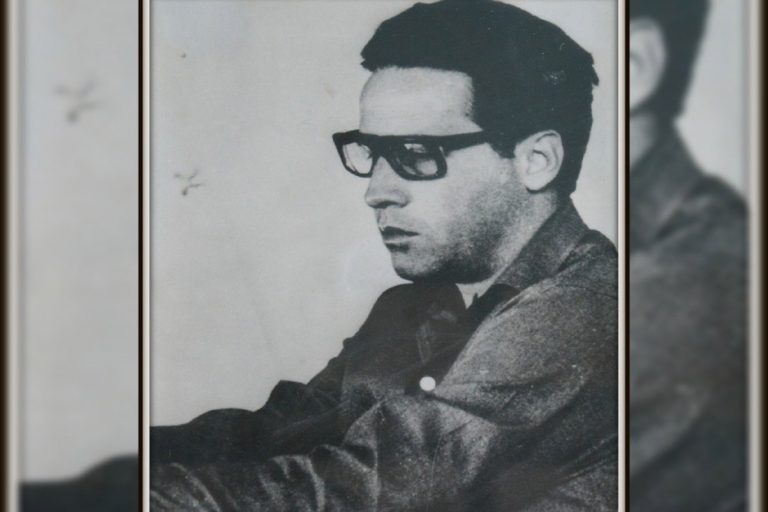The first blood spilled on Bolivian soil, by Che’s column, was Cuban, on April 10th, 1967.
Jesús Suárez Gayol, a man of complete integrity who not only gave his life to the Cuban cause but also shared it with the world; He was 31 years old when he became an internationalist, fulfilling the duty of fighting to liberate the peoples of America.
About its origins
Gayol was born on May 24th, 1936 in Manatí, Las Tunas province, the son of Austrian emigrants. He was a student leader in the fight against the Batista dictatorship, led strikes, rallies, and delivered speeches against tyranny.
The reports that he bravely made were a weapon used by the young man, in which he blamed the government authorities and the police for the torture and repression to which the people were subjected. He suffered several times being beaten in Batista’s cells, from which he came out with more desire to fight against the terrible dictatorship.
His work
In 1955 he founded the July 26 Movement (M-26-7) in Camagüey. The Assault on the Moncada Barracks had marked him greatly, because of what he sees in the figure of Fidel Castro and in the armed struggle the way to achieve true independence.
He enrolls in Architecture at the University of Havana, and from the historic hill he continues his fight against the tyrant. He receives his baptism of fire there: a bullet in a demonstration.
In March 1957 he became a clandestine combatant in the Cuban capital where he was taken prisoner. After multiple efforts, Aurora Gayol, the young man’s mother, manages to snatch him from Batista’s henchmen and sends him to the United States with the purpose of saving his life; because in Cuba everything that smelled of revolution in those years was repressed with torture and even death.
His intense drive
By order of (M-26-7) he organizes combat actions in the province of Pinar del Río, burns a radio station; in fact he suffers burns on his feet. The hit men chased him relentlessly to kill him for such actions.
Due to repression and clandestination, he uses various pseudonyms: Furia, Dionisio, Félix, Armando, until he is transferred to Las Villas, under the command of Che, who shortly afterwards promoted him to the position of captain.
With the light of the Revolution
With the triumph of the Cuban Revolution, Suárez Gayol faces other tasks. He directs several sugar companies, among which the sugar mill Braulio Coroneaux stands out.
When he was summoned by Che to travel to Bolivia, he held the position of Vice Minister of Sugar; the joy of that eternal soldier of the Revolution was immense when he received the message from Ernesto Guevara.
He even remembers his dedication and sacrifice to meet the rigors of training, his organizational skills, his high sense of duty and his potential as a future military cadre.
He joins the guerrilla detachment where he complied with every order, during almost four months of guerrilla activities.
When it is time…
The death of this man was forever marked in the memory of all of us who at some point have had the pleasure of reading in “The Bolivian Diary of Ernesto Che Guevara”, where it is told how the events of such a painful death occurred …
“At midmorning the black arrived very agitated to warn that 15 soldiers were coming downstream. Inti had gone to warn Rolando about the ambush. There was nothing left but to wait and that was done. I sent Tuma so that he would be ready to inform me. Soon the first news arrived, with an unpleasant balance: El Rubio, Jesús Suárez Gayol, was mortally wounded. And dead he arrived at our camp. A bullet in the head.
The thing happened like this: the ambush consisted of 8 men from the rear – reinforcement of 3 from the vanguard, distributed on both sides of the river. When reporting the arrival of the 15 soldiers, Inti passed by where El Rubio was and observed that he was in a very bad position, as he was clearly visible from the river. The soldiers advanced without further precautions but exploring the margins in search of paths and through one of these they entered colliding with Braulio or Pedro before entering the ambush. The fire lasted a few seconds, leaving 1 dead and 3 wounded on the ground, plus 6 prisoners; After a while, a noncommissioned officer also fell and four escaped. Along with a wounded man, they found Rubio already dying; his grenade was stuck, with the fuse loose, but without exploding, it was next to him….
On the morning of April 11th, we began the transfer of all the belongings and buried the Rubio in a small grave on the ground, given the lack of materials …
On April 12th at 6:30 am I gathered all the combatants except the 4 wounded to make a small remembrance of Rubio and signify that the first blood spilled was Cuban…”
Translated by: Aileen Álvarez García






